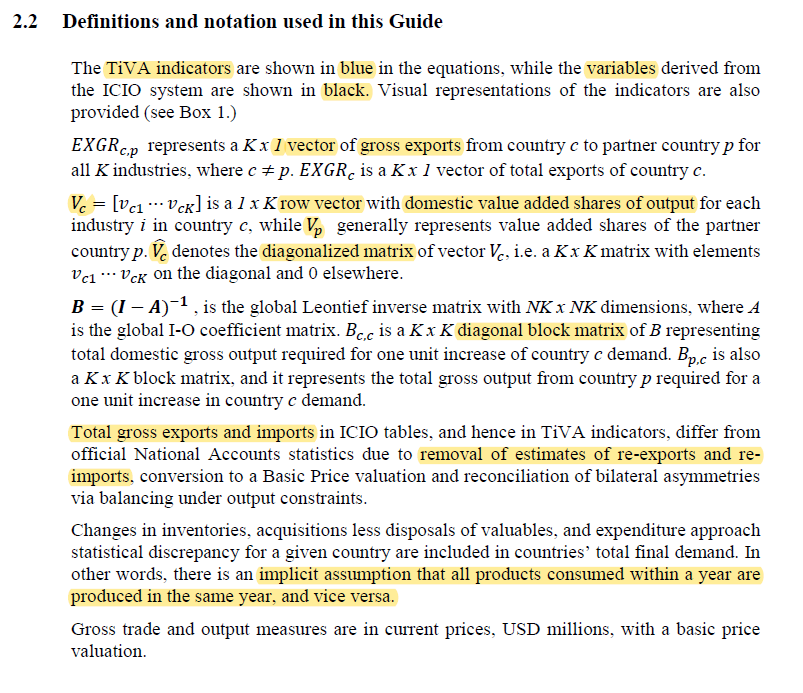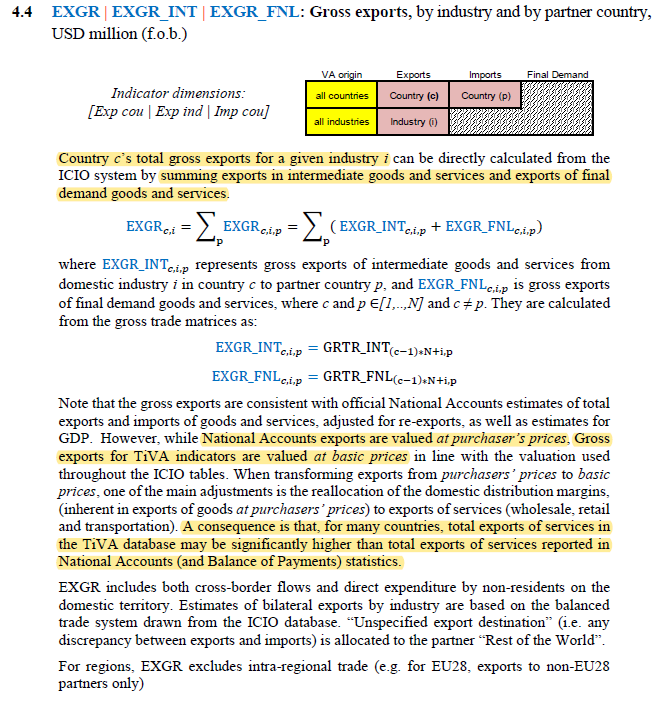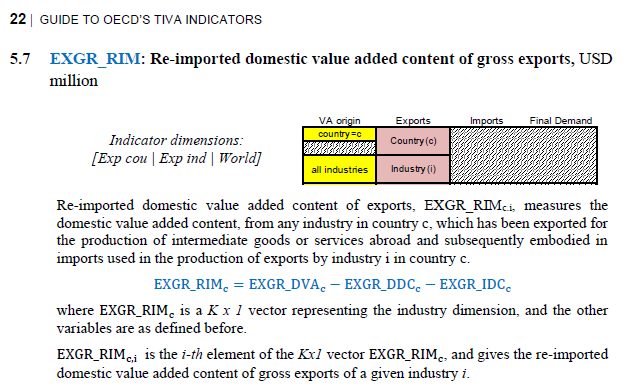Guide to OECD’sTrade in Value Added (TiVA) Indicators, 2018 edition
The Organisation for Economic Co-operation and Development (OECD; French: Organisation de Coopération et de Développement Économiques, OCDE) is an intergovernmental economic organisation with 38 member countries.
Generally, OECD members are high-income economies with a very high Human Development Index (HDI) and are regarded as developed countries.
This guide presents the Trade in Value Added (TiVA) indicators published by OECD. The latest indicators were estimated based on the 2018 release of OECD’s annual Inter-Country Input-Output (ICIO) tables which cover the period 2005 to 2015. The indicators are provided for 64 economies (including all OECD, European Union and G20 countries as well as most of East and Southeast Asia) and a selection of region aggregates and, for 36 unique industries and related aggregates (such as total manufactures and total services) based on the ISIC Rev. 4 classification.
This guide builds on previous versions and is intended for all users, from experienced Input-Output practitioners familiar with the matrix algebra for generating indicators, to relative novices who wish to use TiVA indicators in their analyses and just need guidance on their use and interpretation.
2 OECD’s ICIO Tables: basic definitions
2.1 The OECD’s Inter-Country Input-Output (ICIO) system
The OECD’s ICIO system consists of a set of annual symmetric industry-by-industry global input-output tables. For each year, several matrices can be generated from the ICIO tables to calculate TiVA indicators. Table 2.1, Figure 2.1, Figure 2.2 and Figure 2.3 present the basic structure of the ICIO database and the main matrices need for the estimation of the TiVA indicators.




The basic price1 is what the producer receives and used for production, equivalent to Sales plus subsidies less taxes on products.
Sector i’s gross value added(GVA) = total industry output at basic prices - total intermediate consumption in purchasers’ prices











the amount receivable by the producer from the purchaser for a unit of a good or service produced as output minus any tax payable, and plus any subsidy receivable. Relationships between three prices: Purchasers’ prices - Non-deductible VAT - Trade and transport margins = Producer’s prices, Producer’s prices - Taxes on products + Subsidies on products = Basic prices ↩︎